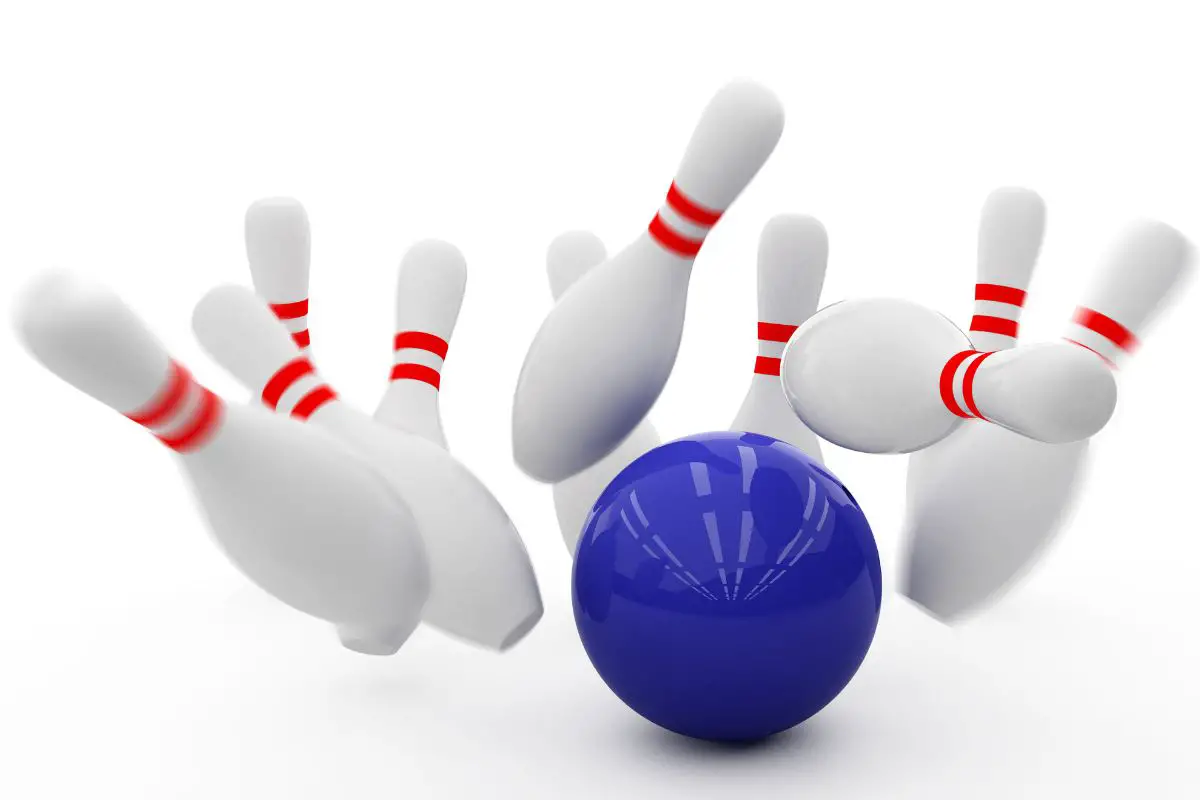The Olympics holds countless different sporting events, ranging from the commonly known (like swimming, running, and gymnastics) to the surprisingly niche (such as skateboarding and sport climbing).
While most events in the Olympics have stood the test of time, not many know about the events featured in only one Olympic competition.

For example, did you know that bowling once was an Olympic event? Sure, it didn’t last long enough to be a permanent fixture in the Olympics, but it was still proven worthy enough of earning its spot.
Just because bowling was once an Olympic sport doesn’t mean it can’t return. Many bowling experts and enthusiasts will argue that their sport should be reintroduced into the Olympics.
Here are the main reasons why bowling should be in the Olympics!
History Of Bowling In The Olympics
Bowling has actually campaigned for years to be added to the Olympics, but not many know that bowling was actually an event in the 1988 Summer Olympics in Seoul, South Korea.
Played at Seoul’s Royal Bowling Center, bowling was first held as a demonstration before earning its spot as a fixture in the Olympics on the 18th of September 1988. The fixture consisted of 20 nations in both men’s and women’s tournaments, but interestingly enough, those who competed in the demonstration events were not professionals.
While it might come as a surprise that 20 nations competed in the bowling event, today, bowling is annually played by over 100 million people. The sport has remained widely popular across the world!
Bowling made a resurgence as a demonstration sport for the 1996 Olympic Games in Atlanta, but unfortunately never made it to another Olympic Games. It got close to being in the 2020 Summer Games when it got cut down to the last eight events to be a new sport in 2015, but it didn’t make the final cut.
The main reason why bowling didn’t make the 2020 Summer Games is because the Olympic Committee wanted to cut costs (as bowling would’ve needed an entire facility to itself). Bowling was also seen as unappealing to youth at the time.
How Are Sports Chosen In The Olympics?
Let’s take a look at how sports are chosen to be in the Olympics. Firstly, the sporting event must be recognized as a sport by the International Olympic Committee (IOC). It is then moved to an International Sports Federation Status, known as an IF status.
Once at an IF status, the sport is legally required to enforce the Olympic Movement Anti-Doping Code along with other rules set by the IOC.
However, here’s the catch – not all IOC-recognized sports can compete in the Olympic Games. The IF status must petition for admittance to the games, and once it’s been presented, it must pass a series of regulations.
For example, the IOC will only accept sports that are widely practiced by men in a minimum of 75 countries across four continents, and the same with women in 40 countries across three continents. The sport must also reflect the traditions of the Olympics and cannot be a “mind sport”, which is why chess isn’t an Olympic sport.
The sport will also go through a series of tests, and this applies to existing Olympic sports as well as potential new ones. One of the tests looks at whether the sport needs a new venue and specific facilities. Another is looking at the enjoyment of the public and media.
Should Bowling Be In The Olympics?
So, now that we’ve looked at bowling’s history in the Olympics and what it takes to be introduced as an Olympic sport, let’s look into whether bowling should be in the Olympics.
Bowling Is Played All Over The World
First and foremost, bowling is a highly popular sport played across the world. The fact that it passes the Olympics criteria of how international the sport is says it all, especially with over 100 million people playing the sport every year. If we’re talking about technicality, this fact alone makes it a suitable sport for the Olympics.
There are many reasons why bowling is played in over 90 countries. It’s a challenging game with straightforward rules, it doesn’t discriminate between races, ages, genders, and disabilities, and most importantly, bowling is fun!
The best part about this figure is that 10 million people compete at an amateur or professional level of bowling every year, meaning there are countless opportunities for new talents and celebrating the most skilled bowling players in the world.
Bowling Is Inclusive And Accessible
Due to its straightforward rules and gameplay, bowling is a wonderfully inclusive and welcoming sport that anyone can play. It doesn’t discriminate against race, age, body shape, gender, or disabilities – instead, the sport can be played by anybody.
When people go bowling for fun, there are several aids to help people who aren’t able to bowl without help. Not only are the lanes mostly flat for those in wheelchairs (though there might be stairs depending on the facility), but bowling alleys also offer bumpers and ramps as an aid for beginners, children, and disabled people.
While the Olympics doesn’t typically allow disabled athletes to compete, bowling can easily be implemented as a Paralympic sport for those with intellectual and physical disabilities.
If the Olympics disregarded this rule and welcomed inclusive sports like bowling, then it would be a huge step towards inclusivity and equality, which is something that the Olympics generally takes pride in.
Bowling Is Straightforward
Bowling is one of the most straightforward sports you can both play and watch. The game is uncomplicated – simply try to knock down as many of the ten pins in as few shots as possible within your ten frames.
As most countries offer bowling as a fun activity, most people understand the rules from a young age anyway.
The scoring system is arguably the most complicated part of bowling. While you receive points for the correlating pins you’ve knocked over, you also can receive bonus points for strikes and spares.
This means that bowling is straightforward to watch as a spectator. So many Olympic sports come with a plethora of complex rules that the public often has to research, but with bowling, everyone knows the rules anyway.
Bowling Is A Skillful Sport
However, while it might look and sound easy, bowling is actually quite a difficult sport to master. Amateur and professional bowling players require a lot of skill as well as athleticism, and it goes way beyond simply aiming the ball at the pins.
Bowling requires core strength, arm strength, endurance, and fantastic hand-eye coordination. For anyone who has ever gone to a bowling alley and relied on the bumpers to avoid rolling the ball into the gutter, you’ll know that bowling is easier said than done.
To go alongside the Olympic rules and regulations, bowling also isn’t a mind sport. While it’s competitive in terms of skill, players aren’t likely to play mind games with each other.
Bowling Is Competitive
While bowling is a straightforward, inclusive, and somewhat friendly sport, it’s actually very competitive in the professional and amateur leagues. Even if you’re in the bowling alley with friends, you’re likely to get competitive with one another. It’s part of the fun!
The main reason why bowling gets competitive is because of the scoring system. Strikes and spares are the two top-scoring shots in bowling thanks to the bonus points. Bowlers will aim to get a strike or at the very least a spare, in a frame to boost their bonus points to the final 300-point mark.
Shooting a strike or spare is far harder than it looks. Some people get a strike or spare by pure luck, but for professionals, there’s a lot of skill and practice involved. After all, the aim is to knock down as many pins as possible in as few shots as possible.
Bowling Inspires People
Unfortunately, bowling is barely ever shown on a professional scale, unless you are a professional bowling player. For people who only go bowling a couple of times a year with family and friends, they might not be aware of the competitive side of bowling.
What better way to encourage people to take up bowling as a competitive sport than to have it as an event in the Olympics? After all, people have been inspired by sprinters, swimmers, and gymnasts for decades, so why can’t the same energy be used for professional bowling players?
The best part is that bowling is a great way to encourage kids to get active. Not only does it improve their strength, endurance, and hand-eye coordination, but it also improves their quick math skills.
Kids can use multiplication and addition to work out the total for each player, including bonuses, which are often tricky to work out without a calculator.
Bowling Has History And Tradition
As with the Olympics itself, bowling is steeped with a rich history and traditions. Tradition is regarded very highly in the Olympics, so it only makes sense to fill the Olympics with sports that also have rich histories.
It is believed that bowling actually originated from the Ancient Egyptians, wherein archaeologists discovered the tomb of a child buried in 3200 BC. Inside the tomb were nine stones set up in a triangle and a circular ball.

Bowling with pins came about as a sport in Ancient Germany as a religious ceremony in the 3rd or 4th century AD. It was believed to be a sin-cleansing ritual. Over time, the material used for the ball evolved from a stone to a large wooden ball.
The game spread to Switzerland, Austria, and northwestern Europe in the 16th and 17th centuries before moving over to London, wherein covered lanes were established. This is when bowling became both an indoor and outdoor sport to enjoy throughout the year.
British settlers brought lawn bowls to North America, but it’s unclear when the pins were introduced. The tenpin bowling game came to fruition in the 1830s, when the bowling scene was particularly popular in the United States and Europe. The American Bowling Congress (ABC) was established in 1895 to develop rules and regulations.
The evolution of bowling balls developed from a stone to a wooden ball, to polyester balls made from a pin-setting machine in the 1950s. Other materials were later introduced to allow for different weights.
The rich history of bowling alone is a good enough reason to introduce it back into the Olympics. Turns out, not many people know about bowling’s traditions or origins, and the Olympics is a great way to spread the message!
Bowling Can Be In Any Olympics
Bowling is an incredibly versatile sport, meaning it doesn’t have to just be in the Summer Olympics. As bowling is an indoor sport, it can be played in both the Summer and Winter Olympics, which is ideal considering how jam-packed the sporting events are in the Summer Games.
Plus, bowling is fairly similar to curling, which is a Winter Olympic sport. As the sports share similarities, it makes sense to introduce bowling into the games.
Not only this but due to bowling’s inclusivity for those with physical and intellectual disabilities, bowling can also be introduced into the Summer or Winter Paralympics. Disabled bowling players can have aids just like any other sport, plus it’ll help to encourage equality and accessibility in bowling alleys across the world.
There Are Existing Bowling Competitions
Bowling has been a competitive sport for centuries, with countless leagues and competitions around the world. These competitions range from local to professional levels, with some traveling from other states and countries just to compete.
The most famous bowling competition is the World Bowling Tour, which is a professional tournament that unites bowling players on an international scale in a series of competitive events. If you’re a bowling enthusiast, the World Bowling Tour is kind of the World Cup of bowling and is what most professionals strive to partake in.
However, not just anyone can compete in the World Bowling Tour. Competitors need to be registered as a member of one of the World Tenpin Bowling Association’s federations to compete. This goes to show the competitive nature of bowling and how seriously the sport is taken into consideration, which is another reason why it should be in the Olympics.
Bowling Is Free From Doping
For a sport to be considered for a place in the Olympics, it must have an IF status and follow the Olympic Movement Anti-Doping Code, which prohibits the use of drugs to boost performance.
Over the decades, countless instances of doping have been found in popular Olympic sports, such as swimming and sprinting, leading to the banishment of athletes from competing in the future. The Olympics is about fairness, after all, and there is nothing fair about taking substances to enhance performance.
However, there is no need for substance abuse in bowling. Doping is highly unlikely because of the nature of bowling, especially considering drugs won’t actually improve anyone’s performance.
Bowling is all about aim, strength, and endurance rather than physical speed, so there’s no place for drugs.
As bowling is pretty much a doping-free sport, it makes for an ideal event in the Olympics.
The World Bowling Governing Body
The first hurdle that sports must overcome when applying to be a part of the Olympics is that they require a governing body that encompasses the game internationally. Fortunately, bowling has a world governing body known as the International Bowling Federation or the IBF.
The International Bowling Federation has governed nine-pin and ten-pin bowling since 1952 when it was first established in Germany. Not only was the IDF established to boost the popularity of the sport, but it was also designed to create international friendships across countries who also played the sport.
Not only does the IDF have member federations in all five Olympic regions, but it is also recognized by the International Olympic Committee. This recognition has been since 1979, meaning that the Olympics have actually had the chance to consider bowling as a sporting event for several decades.
Bowling Is Like Other Olympic Sports
One of the main reasons why bowling fans get frustrated that bowling isn’t part of the Olympics is because there are other similar sports that have a permanent fixture. If sports like curling are allowed in the Olympics, then why not bowling? And if the answer is because the sports are too similar, then why not swap out curling for bowling?
At the end of the day, bowling encompasses everything that any sport should have to qualify for the Olympics. It’s competitive, entertaining to watch, and a game of pure skill. Plus, if bowling was allowed in the 1988 Olympics in Seoul, then why can’t it appear again?
Why Bowling Isn’t In The Olympics
So, there seem to be countless reasons why bowling should be considered a fixture in the Olympics. However, there are arguments against bowling that explain why the sport isn’t part of the Olympic Games.
Bowling Requires New Facilities
While the budget of the Olympics must seem high, the committee is known for cutting costs wherever possible. One of the best ways to cut costs is by cutting out sports that require entire facilities, such as bowling.
Bowling requires an alley with a sufficient number of lanes, not to mention other aspects such as a seating area and the relevant machinery.
These facilities aren’t cheap to make, and if bowling isn’t going to be an official and permanent part of the Olympics, then it’s not worth spending money on making the facility every four years.
After all, a lot of Olympic sports are held in versatile facilities, such as the large swimming pools for swimming, diving, and synchronized swimming, and the range of sports that occur in the main athletic field.
Bowling Is Considered A Family Game
Bowling is commonly known as a fun day activity for families and friends. People across the world will visit a bowling alley for any reason, but mostly so they can have some fun. As a result of this, bowling is mostly considered a family game rather than a competitive sport.
When in a professional setting, bowling is still considered a sociable activity. While the act of bowling is competitive, team members have to wait for their turn, wherein they can chat and discuss scores. Of course, a lot of professional bowling competitions require silence to ensure maximum concentration, but this notion is still considered too sociable for the Olympics.
Bowling Is Still Inaccessible In Some Countries
While bowling is considered an accessible sport in developed countries, it is still largely inaccessible elsewhere. It’s important to note that even though there are roughly 100 million bowling players worldwide that play per year, approximately 67 million of those are in the United States, where bowling is deemed accessible.
In a lot of countries elsewhere, not even bowling alleys exist. Bowling is easily completed by rolling a ball at makeshift pins on a range of indoor and outdoor terrains, which doesn’t match up to the facilities in Western countries. This also means aids such as bumpers and ramps aren’t accessible, either.
The Olympics is all about fairness, and if not every country shares the same rules, standards, and facilities as others, then it cannot be considered a fair game.
Bowling Doesn’t Attract The Media
The Olympics relies on the media to provide coverage for all countries. As a televised event, it’s common for the media to only show highlights of lesser-known sporting events compared to popular ones, especially if there are clashes.
Unfortunately, bowling doesn’t attract the media. There’s not much to film in a bowling game other than people bowling a ball and hitting a strike or spare. Other than that, the novelty wears off a bit – especially with ten frames per player. With that many frames and however many competing countries, it can be a slow game to endure.
Plus, it is becoming increasingly more prevalent for the Olympic committee to cater to younger audiences to boost morale and inspiration. As bowling isn’t considered entertaining for younger audiences, it’s not deemed a necessary fixture in the games.
Bowling Isn’t Fun To Watch
While it might be fun to play when it’s your turn, bowling isn’t all that fun to watch. Sure, it’s entertaining when you go bowling with your family or friends, but the actual act of watching people bowl for hours straight is probably super tedious.
So, if bowling doesn’t attract the media, it’s not going to attract an audience, either. People will buy tickets to virtually any Olympic sport just to say they’ve been, but bowling isn’t likely to be a high demand. While it might be interesting for professionals to watch, the same isn’t said for the general public.
There Aren’t Famous Bowlers
When you think of the Olympics, you think about the countless famous (and infamous) athletes, like Usain Bolt, Michael Phelps, Simone Biles, Serena Williams, and more. However, there aren’t really any famous bowling players. Unless you’re an avid bowler who is passionate about the sport, you’re not likely to know any famous players.
This goes hand-in-hand with the lack of media attention, but if there isn’t a specific bowler that people are excited to see represent their country, then it might not be worth a place in the Olympics.
Anyone Can Go Bowling
This ties in with the previous point. When watching the Olympics, you can celebrate and aspire to be like countless skilled and talented athletes. However, anyone can learn how to bowl, and it doesn’t take too long, either.
This isn’t to belittle the sport, because it is harder than it looks, but because literally anybody can learn how to bowl, it makes it harder for bowling to fit the regulations of the Olympics. People of all ages, genders, and disabilities can compete, but Olympic events are strictly regulated into categories to make for a fair game.
Bowling Doesn’t Have a Progression
At some point, professional bowlers can’t really progress further than hitting multiple strikes in a row. That’s kind of where bowling comes to a dead end. Unlike sprinting or swimming where people can continue to break world records, the only possible world record to be broken in bowling is a record number of strikes in a game, which only ever amounts to 300 points.
As a result of this, it’s not easy to measure success in bowling. Sure, the scoring system means you can celebrate the bonus points from spares and strikes, but that’s about as far as success goes. It is a low-stakes sport, meaning it’s not going to compete for media attention compared to other events.
Most Bowlers Are Right-Handed
Interestingly, most bowling players are right-handed. This actually holds a large impact on why bowling cannot be a part of the Olympics.
If you think about it, when a right-handed person goes bowling, the left-handed bowlers have to bowl on an unfair side of the alley. Bowling uses a lot of oils to enhance gameplay and encourage the balls to move faster, and when the breakdown of those oils is predominantly from the right-hand side, this is considered unfair for left-handed players.
Sure, this can be helped by frequently oiling the lanes, but this only costs time and money. Bowling as an Olympic sport isn’t enjoyable to watch in the first place, let alone with regular breaks to oil the lanes.
Conclusion
So, there you have it!
Turns out, there’s a lot more to bowling than meets the eye. It’s clear why people are passionate about wanting the sport to be introduced in the Olympics, especially as the sport actually follows most of the rules and regulations anyway.
While it’s also understandable why bowling isn’t an Olympic-qualified sport, that’s not to say it will never make a resurgence.
New sports are added to the Olympics every year, and if the Olympics can include rogue events like skateboarding, then who’s to say that bowling won’t be considered in the future?
As the future of bowling in the Olympics is unclear, it means anyone has the opportunity to learn how to be a professional bowler when the time comes.
- A Comprehensive Guide to the Top Bowling Movies of All Time - December 23, 2023
- Bowling Shoes Selection Guide: How to Choose the Right Fit - September 27, 2023
- Bowling Ball Buying Guide: How to Choose the Right Ball for You - September 23, 2023









